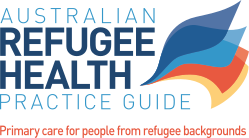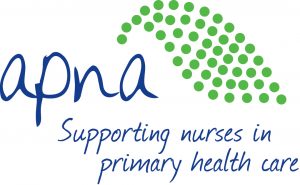Adolescents
Also see children
Table of contents
Key points
- During adolescence, healthcare visits may be limited; the consultation goal should be to complete a thorough physical and psychosocial evaluation, with an emphasis on preventative care.
- Adolescents should be seen alone at some point during (or soon after) the initial refugee health screening assessment.
- Define confidentiality for the medical consultation and (separately) for working with interpreters.
- Adolescents may have an incorrect date of birth recorded; this can have significant implications for assessing growth, development, learning or school/vocational placement.
- Mental health problems may present in adolescence. Adolescents may make new meaning from past trauma, and present with mental health concerns in relation to early childhood trauma.
Consider sexual health, sexually transmitted infections (STIs, including hepatitis B), sexual violence, and female circumcision. A sensitive history is required, allowing adequate time.
Overview
The World Health Organization defines adolescent as 10–19 years, youth as 15–24 years and young people as 10–24 years. Humanitarian populations include a high proportion of children and young people. In 2016, 28% of the Australian humanitarian intake was aged less than 12 years, and 23% were aged 12–24 years. Some refugee adolescents arrive as unaccompanied humanitarian minors; other adolescents of refugee-like background arrive under alternative visas (e.g. orphan relative) or as asylum seekers.
Adolescent developmental issues include physical and cognitive transitions, emergent autonomy and independence, personal identity and body image, peer relationships and recreational goals, educational and vocational goals, and sexuality. Adolescence can be divided into three general stages of psychosocial development:
| Early adolescence (10–14 years) | Late adolescence (15–19 years) | Young adulthood (19–24 years) |
|
Rapid growth and physical change, secondary sexual characteristics develop Gender roles consolidate Low resistance to peer influences Low future orientation Poor self regulation and increases in risk taking behaviour Identity formation and new interests, including sexual relationships |
Pubertal maturation Growth rate decreases Progression of intimate relationships Development of executive and self-regulation skills Greater future orientation and ability to assess consequences Increasing autonomy and independence from family |
Peak physical fitness and bone density Further development of reasoning and self-regulation Education and vocational goals important Adoption of adult roles and responsibilities |
|
Establishing the social, cultural, emotional, educational and economic resources to maintain health and wellbeing across the life course. Rapid adoption and use of technology Risks of injuries/transport injuries, communicable diseases, non-communicable diseases, mental health disorders, substance use, and maternal disorders, with variation between countries in risks and burden. |
||
Adolescents of refugee-like background experience all these transitions in addition those of resettlement. They face balancing the values/expectations of their parents/cultural background with those of their new peers, while developing their own identity and learning a new language, in a new schooling system, in a new country.
Approach to care
During adolescence, healthcare visits may be limited, and adolescents may seek care from a variety of providers. The goal should be to complete a thorough physical and psychosocial evaluation with an emphasis on preventative care. The initial refugee health assessment provides a starting point to introduce longer-term, developmentally appropriate care in the areas of physical, mental and sexual health.
When consulting with adolescents, helpful strategies include:
- Seeing the adolescent alone at some point during (or soon after) the initial screening. assessment. This may be more acceptable to parents and adolescents if the health provider sees the family initially, and they are aware this will occur in the future.
- Establishing confidentiality for the medical consultation (and also for the interpreter).
- Taking a direct history from the adolescent.
- Using clear language, open-ended questions, and a non-judgmental approach.
- Allowing enough time.
HEADSSS screening can be used to assess adolescent psychosocial health:
H – home
E – education/employment (and eating)
A – activities
D – drug and alcohol use
S – sexual activity
S – suicide, depression, self-harm
S – safety from injury and violence
Considerations include:
- Immigration Medical Examination (IME) for adolescents includes urinalysis (5 years and older), chest x-ray (11 years and older), HIV screening (15 years and older), and syphilis screening (15 years and older). Unaccompanied minors (all ages) also have screening for HIV and HBsAg; onshore protection visa applicants (15 years and older) also have screening for HBsAg and HCV.
- IGRA testing is more reliable in adolescents for tuberculosis screening.
- Catch-up vaccination and vaccine licensing varies with age. Adolescents will generally not need pneumococcal or Hib vaccines, they will need HPV vaccine, and the varicella vaccine schedule changes at 14 years.
- Mental illness may present in adolescence. Adolescents may also make new meaning from past trauma, and present with mental health concerns arising from early childhood trauma.
- Sexual health is an important area that is often neglected. Many refugee-background young people have low sexual health literacy, and limited opportunities to learn about sexual health. Consider STIs (including hepatitis B), sexual violence, and female circumcision.
- Family structures and parenting roles may change with migration, affecting settlement and leading to ‘role reversal’, with adolescents having increased responsibility, or taking on parenting roles.
- Prior schooling may have been limited or interrupted, with implications for educational placement in Australia. Evidence shows refugee young people have similar education outcomes to their native-born peers – ensure a proactive approach and early paediatric review for learning problems.
- Adolescents may have an incorrect birthdate recorded; this is important to consider when assessing growth, development, learning, or school/vocational placement.
- It takes many years to learn English as an additional language for academic purposes – explaining this is important, and a way to explore schooling and risk/resilience factors.
- Seek early paediatric review for complex adolescent health issues, including physical health, learning/behavioural concerns, disability, and age assessment. Paediatric review may also help facilitate access to (and acceptance of) mental health services.
Links
ASID/RHeANA guidelines: Recommendations for Comprehensive Post-Arrival Health Assessment for people from Refugee-like backgrounds (2016 edition)
The Lancet – adolescent health
Raising Children Network (focus is 0-15 years)




